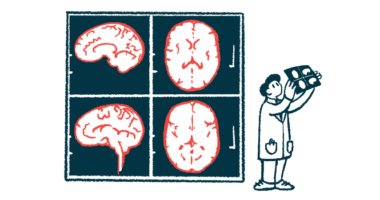Ban sought for TCE, common chemical likely linked to Parkinson’s
Chemical is banned in EU; in US, Minnesota and New York disallow its use

Scientists are calling for a ban on trichloroethylene (TCE), a common and widely used chemical that’s increasingly linked to multiple health problems, including cancer and Parkinson’s disease.
“Through a literature review and seven illustrative cases, we postulate that this ubiquitous chemical is contributing to the global rise of PD [Parkinson’s disease] and that TCE is one of its invisible and highly preventable causes,” the researchers wrote.
TCE is banned in the European Union except for authorized industrial uses and it’s been banned by Minnesota and New York in the U.S., but not by the federal government.
The international team, comprised mainly of U.S. researchers, also called for more studies into TCE’s potential health risks, for the cleanup of contaminated sites, and for more information to be made available about the dangers of contamination.
The team posed their argument in the study “Trichloroethylene: An Invisible Cause of Parkinson’s Disease?,” which was published in the Journal of Parkinson’s Disease.
Parkinson’s is believed to be caused by a combination of genetic and environmental factors. Mounting evidence shows that exposure to environmental pollutants, such as pesticides and certain chemicals, may put people at increased risk of developing it.
TCE’s use in commercial, industrial applications
TCE was developed in the lab in the 1860s and began to be commercialized in the 1920s. The chemical is a powerful solvent — a liquid that can dissolve other substances — and it’s been widely used in cleaning applications, from making refrigerants to removing grease on military equipment and dry cleaning clothing. It’s also been used to decaffeinate coffee and in consumer products, including adhesives and various cleaning supplies.
“A closely related chemical called perchloroethylene (PCE) … largely supplanted TCE in dry cleaning in the 1950s,” the researchers wrote, adding that PCE can transform into TCE under certain conditions and “their toxicity may be similar.”
The number of people around the world who’ve been exposed to the chemical at work has increased 30% in the last three decades, the researchers noted. They emphasized that TCE doesn’t just pose a risk to people who work with it, however. Many people who are exposed to the chemical don’t even know it.
“TCE pollutes outdoor air, taints groundwater, and contaminates indoor air,” the researchers wrote, adding that the chemical “evaporates from underlying soil and groundwater and enters homes, workplaces, or schools, often undetected.”
“In Monroe County, New York, where many of the authors of this report live, more than a dozen dry cleaners have contaminated the ground with TCE,” they wrote.
Reports of people who were exposed to TCE and went on to develop Parkinson’s date as far back as 1969. The researchers described seven cases, from a former NBA basketball player to a Navy captain, with a clear history of exposure, whether at work or through the environment at known contaminated areas.
“The evidence linking possible exposure to TCE in these cases is circumstantial, but raises worrisome questions about the link between the chemical and the disease,” they wrote.
A previous small study in twins indicated that those exposed to TCE were six times more likely to develop Parkinson’s. In rodents, chronic exposure was shown to result in neuroinflammation, toxic alpha-synuclein protein clumps, and the selective loss of nerve cells that produce the chemical messenger dopamine — all hallmarks of Parkinson’s disease.
The researchers emphasized that more research into these connections is needed and that clinicians should talk to their patients about potential exposure.
“Listening to [patients’] life stories or occupational histories can help identify TCE or other factors contributing to PD and could help develop [cause-specific] treatments,” they wrote.
A well-established carcinogen
Beyond its possible connection with Parkinson’s, TCE has been linked with other health problems. It’s a well-established carcinogen (a compound that can cause cancer) and can cause problems with a developing fetus if exposure occurs during pregnancy.
“In many ways, the long-established health risks of TCE dwarf its relationship with PD. TCE causes cancer, increases the risk of miscarriages, contributes to birth defects, and is associated with diseases in nearly every organ system,” the researchers wrote.
TCE use in the U.S. has declined since the 1970s when the country was producing 600 million pounds of the chemical a year, the equivalent to 2 pounds for every person in the country. The U.S. remains the top global exporter of the chemical, however.
The researchers also called for further efforts to clean TCE-contaminated sites, monitor exposure levels, and communicate the risk of exposure to the public. They said safer alternatives to TCE should also be developed and put into use, and called for governments to ban it.
“The chemical is over a century old. We do not fly airplanes from the days of the Wright brothers or drive cars from Henry Ford’s era; engineers have developed safer ones. Chemists can do the same for solvents,” the researchers wrote.







